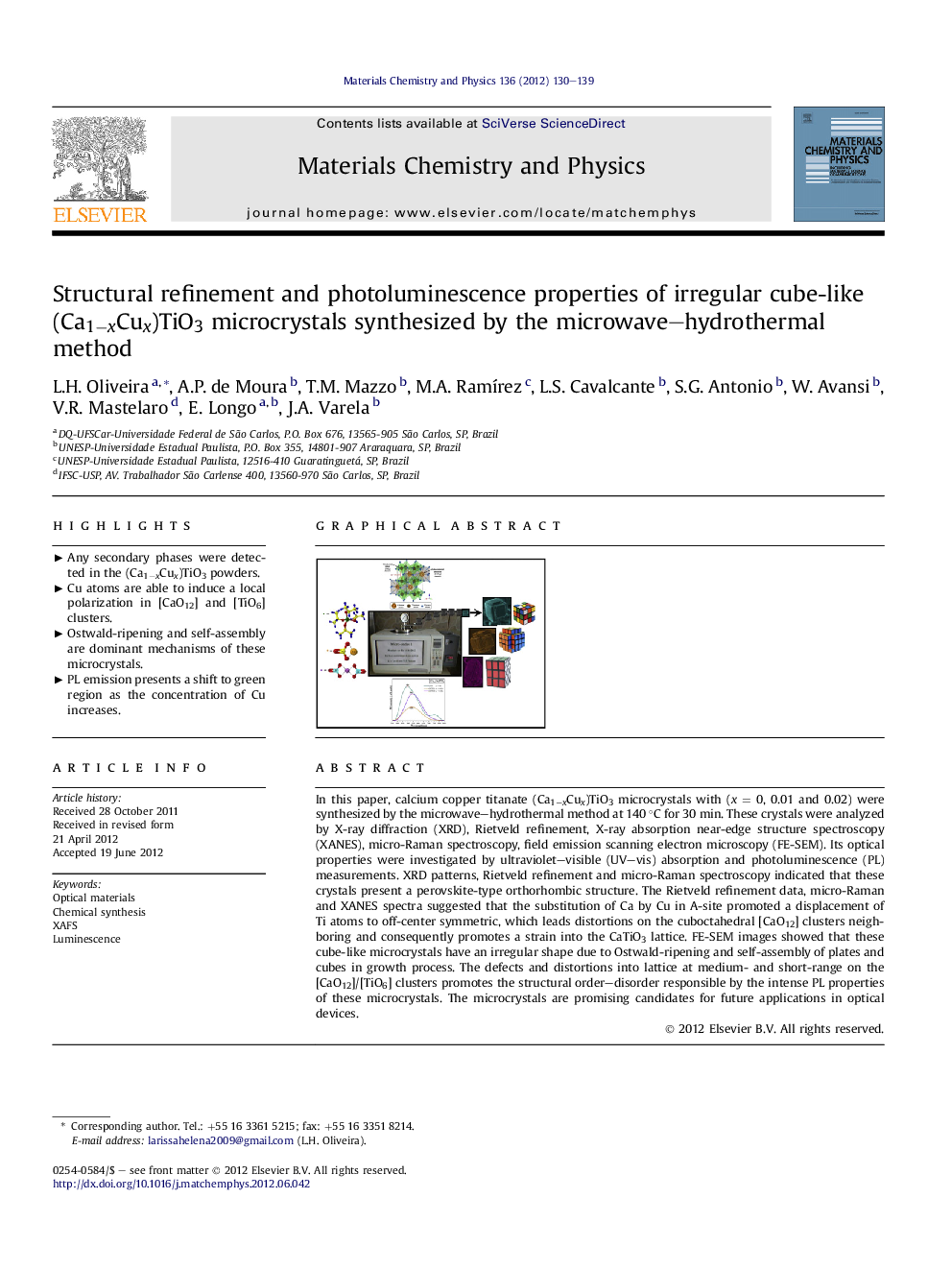| کد مقاله | کد نشریه | سال انتشار | مقاله انگلیسی | نسخه تمام متن |
|---|---|---|---|---|
| 1523784 | 995330 | 2012 | 10 صفحه PDF | دانلود رایگان |

In this paper, calcium copper titanate (Ca1−xCux)TiO3 microcrystals with (x = 0, 0.01 and 0.02) were synthesized by the microwave–hydrothermal method at 140 °C for 30 min. These crystals were analyzed by X-ray diffraction (XRD), Rietveld refinement, X-ray absorption near-edge structure spectroscopy (XANES), micro-Raman spectroscopy, field emission scanning electron microscopy (FE-SEM). Its optical properties were investigated by ultraviolet–visible (UV–vis) absorption and photoluminescence (PL) measurements. XRD patterns, Rietveld refinement and micro-Raman spectroscopy indicated that these crystals present a perovskite-type orthorhombic structure. The Rietveld refinement data, micro-Raman and XANES spectra suggested that the substitution of Ca by Cu in A-site promoted a displacement of Ti atoms to off-center symmetric, which leads distortions on the cuboctahedral [CaO12] clusters neighboring and consequently promotes a strain into the CaTiO3 lattice. FE-SEM images showed that these cube-like microcrystals have an irregular shape due to Ostwald-ripening and self-assembly of plates and cubes in growth process. The defects and distortions into lattice at medium- and short-range on the [CaO12]/[TiO6] clusters promotes the structural order–disorder responsible by the intense PL properties of these microcrystals. The microcrystals are promising candidates for future applications in optical devices.
Figure optionsDownload as PowerPoint slideHighlights
► Any secondary phases were detected in the (Ca1−xCux)TiO3 powders.
► Cu atoms are able to induce a local polarization in [CaO12] and [TiO6] clusters.
► Ostwald-ripening and self-assembly are dominant mechanisms of these microcrystals.
► PL emission presents a shift to green region as the concentration of Cu increases.
Journal: Materials Chemistry and Physics - Volume 136, Issue 1, 14 September 2012, Pages 130–139